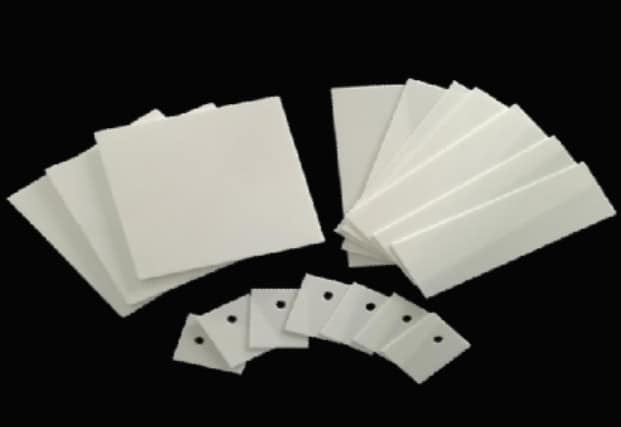It is well known that manufacturing high purity alumina ceramic plates is difficult because of the high melting point and hardness of most ceramics, a fact that limits the possibility of mechanical processing of ceramics, so alumina ceramic plates are often mixed with lower melting point glass for fluxing or bonding to make the final product easy to machine.

The substrate material is ground into a powder diameter of a few microns, mixed with different glass fluxes and bonding agents (including powdered MgO, CaO), in addition to adding some organic bonding agents and different plasticizers to the mixture and then ball milling to prevent agglomeration to make the composition uniform, molding raw ceramic tiles, and finally high-temperature sintering. Currently there are several methods of ceramic molding as follows.
- Roller rolling
The slurry is sprayed onto a flat surface, partially dried to form a viscosity like putty-like flakes, and then the flakes are sent to a pair of large parallel rollers to roll to get a uniform thickness of raw porcelain flakes.
- Casting
The paste is coated by a sharp knife blade on a moving belt to form the flakes. Compared with other processes, this is a low-pressure process.
- Powder pressing
The powder is sintered in a hard mold cavity and under a high pressure (about 138 MPa). Although uneven pressure may produce excessive warpage, this process produces very dense sintered parts with low tolerance.
- Isostatic powder compacting
This process uses a die surrounded by water or glycerin and a pressure of up to 69 MPa. This pressure is more uniform and produces parts with less warpage.
- Extrusion
The paste is extruded through the die. This process uses a low viscosity paste, which makes it difficult to obtain small tolerances, but this process is very economical and can yield thinner parts than other methods.
Ceramic Parts India Inc. specialize in producing alumina ceramic plates, if you are interested, please feel free to contact us.